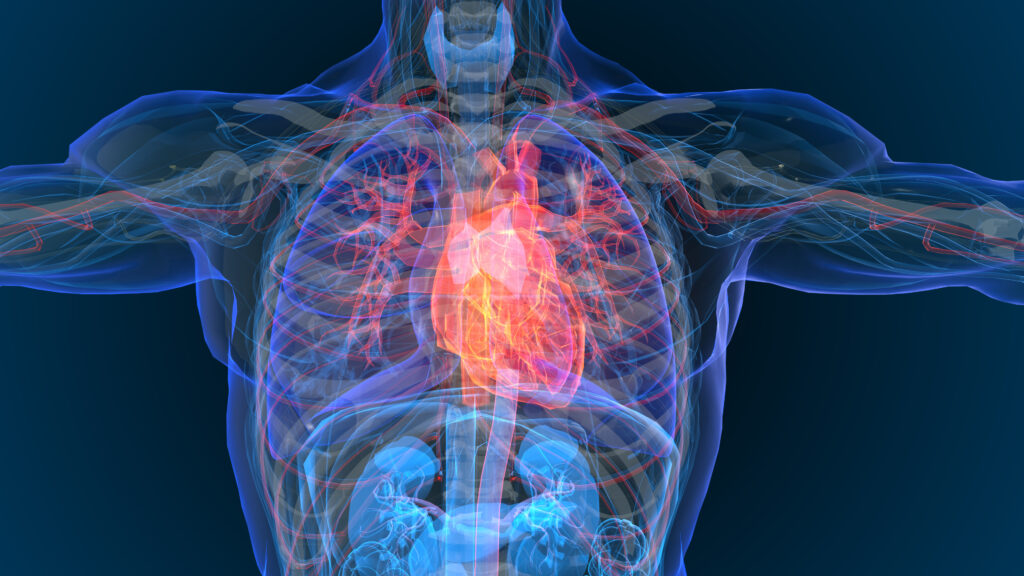Hyperthyroidism mainly affects the female population, occurring in around 2% of women and 0.2% of men.1 The majority of patients with hyperthyroidism have Graves’ disease (GD) and, less often, solitary toxic nodule or toxic multinodular goitre. Other causes of hyperthyroidism are relatively rare and are summarised in Table 1.
Hyperthyroidism mainly affects the female population, occurring in around 2% of women and 0.2% of men.1 The majority of patients with hyperthyroidism have Graves’ disease (GD) and, less often, solitary toxic nodule or toxic multinodular goitre. Other causes of hyperthyroidism are relatively rare and are summarised in Table 1. Establishing the accurate cause of hyperthyroidism is important as this influences treatment strategy and is usually achieved by a combination of clinical assessment, thyroid function tests – including thyroid autoimmune screening – and radionuclide scans with 123I, 131I or 99mTc for difficult cases. This review will focus on the medical management of hyperthyroidism with specia emphasis on GD
Medical Management of Hyperthyroidism
Antithyroid drugs and radioactive iodine (RAI) remain the mainstay of medical treatment for patients with GD or toxic nodular goitre, although surgery still has a place in some cases. Patients with severe symptoms may require additional symptomatic treatment
Graves’ DiseaseAntithyroid Drugs
Known as thionamides, this group of drugs includes propylthiouracil, carbimazole and its active metabolite, methimazole. These agents nterfere with the action of thyroid peroxidase, thereby inhibiting thyroid hormone production. In addition, they have an immunosuppressive action, which helps in inducing disease remission, although the basis of this effect remains in debate.2 Propylthiouracil is the only antithyroid agent that inhibits peripheral deiodination, thereby blocking the conversion of thyroxine to the active hormone tri-iodothyronine, although this effect does not seem to be clinically important.3 Antithyroid drugs are given in two different ways: either as titration or as block and replace regime. In titration therapy, treatment is usually continued for 18-24 months, whereas most use the block and replace regimen for six months, as longer treatment is not associated with higher remission rate.4 Using either programme, however, the remission rate is disappointingly low as half to two-thirds of patients relapse. Recurrence usually occurs within the first 6-12 months after stopping treatment but may occur years later.5 Other regimens using low-dose antithyroid drugs in combination with thyroxine or antithyroid drugs alone for 12-18 months, followed by thyroxine treatment, have not shown any difference in relapse rate and therefore these regimes cannot be advocated.4
Side effects of antithyroid drugs (summarised in Table 2) are marginally higher with the block and replace compared with the titration regime, but advantages of the former are quicker control and less fluctuation of thyroid function, fewer hospital visits and shorter period of treatment The most serious complication is agranulocytosis and all patients are advised to report immediately to their physician if they develop a temperature, sore throat or mouth ulcers while on treatment. Switching from one antithyroid agent to another is possible in cases of mild side effects, but agranulocytosis with any of the antithyroid drugs represents a contraindication to the further use of these agentsUnfortunately, there is no reliable clinical marker that can predict relapse,6 but patients with severe thyrotoxicosis, a large goitre or extrathyroida complications are less likely to enter remission.3 Individuals with high thyroid-stimulating hormone (TSH) receptor antibodies post-treatment are more likely to relapse, but the converse is not true, and therefore antibody measurement has a limited role in planning treatment strategy.7 Patients who relapse after antithyroid treatment are usually offered RAI treatment or surgery. A minority opt for long-term antithyroid drug therapy, which can effectively control thyroid function with no long-term side effects.8Radioactive Iodine
Although this treatment is safe and effective, it is not yet routinely used as first-line therapy for GD in Europe. A significant number of patients are reluctant to undergo this treatment due to unfounded fear of radiation Some patients are also concerned about permanent hypothyroidism post-RAI necessitating thyroid hormone replacement for life. RAI treatment carries a small risk of aggravating thyroid eye disease, particularly in smokers.9 This risk of cancer after RAI has been addressed in a number of studies. A comprehensive study by Franklyn and colleagues showed no ncrease in general cancer rates post-RAI, but a small increase in thyroid and bowel cancer was documented.10 More recent work in Finland failedto show an increase in thyroid cancer after RAI but found a significant ncrease in stomach, kidney and breast cancers.11 However, the absolute risk was quite small and mainly found in older patients with nodular disease and therefore the increased cancer incidence in this study could not be conclusively attributed to RAI treatment. An increase in cardiovascular risk after RAI treatment has also been suggested. 12–14 However, Metso and colleagues found that hypothyroidism post-RAI offered protection from cardiovascular disease, suggesting that hyperthyroidism per se rather than RAI treatment is responsible for the ncreased cardiovascular events in these patientsComplex calculations to administer ‘the optimal dose’ of RAI are unnecessary and a fixed-dose approach is preferred as it simplifies treatment and has a similar success rate with no increase in side effects.15 The failure rate of RAI treatment is less than 20%; therefore, this form of therapy should be considered initially and discussed with GD patients. Antithyroid drugs should not be given immediately before or after RAI as this may ncrease treatment failure rate.16 Furthermore, the use of carbimazole or methimazole prior to RAI is preferred over the use of propylthiouracil, which is associated with higher RAI treatment failure, although this effect is perhaps smaller than previously thought.16 Immediate side effects of RAI are rare and include transient nausea and pain over the thyroid gland 1-3 days after administration.17 Thyroid storm may occur rarely after RAI, particularly in those with large goitres and severe hyperthyroidism.18 Figure 1 summarises the medical management of GD
Symptomatic Treatment
In a minority of patients with severe symptoms, non-selective [3-adrenergic blocking agents can be used, which provide partial relief from symptoms such as palpitations, tremors and anxiety without affecting thyroid hormone levels.19 These agents can also be used by ndividuals intolerant to antithyroid drugs, while considering other forms of therapy including RAI or surgery
First-line treatment for Graves’ disease in Europe is antithyroid drugs, although radioactiveiodine can be considered initially after discussion with the patient. Antithyroid drugs aregiven for 6–18 months either as block and replace or titration regime. More than 50% ofpatients relapse after antithyroid drug treatment and most are subsequently treated withradioactive iodine.
|
Table 1: Causes, Aetiology and Diagnosis of Hyperthyroidism |
||
|
Cause of Hyperthyroidism |
Frequency and Aetiology |
Diagnosis |
|
Graves’ disease |
80%, thyroid-stimulating antibodies |
Clinical examination (especially for ophthalmopathy) |
|
Toxic nodule or toxic multinodular goitre |
15%, activating mutations in TSH receptor and Gs proteina |
Clinical examination |
|
Thyroiditis |
2-4%, autoimmune-, viral- or drug-related (amiodarone) |
Clinical examination |
|
TSH-secreting tumour |
<1% |
Raised TSH and thyroid hormones Pituitary imaging a subunit assay |
|
Exogenous thyroid hormone administration |
Variable, excess ingestion of thyroid hormones |
Clinical assessment |
|
Hyperemesis, gravidarum and choriocarcinoma |
Rare, raised human chorionic gonadotropin (hCG) |
Clinical assessment |
|
Struma ovarii |
Rare, ectopic ovarian thyroid tissue |
Clinical assessment Thyroid/pelvic uptake scan maging of the pelvis |
|
Thyroid-hormone resistance |
Rare, pituitary resistance to thyroid hormones |
Clinical assessment |
subclinical hyperthyroidism. The prevalence of this condition varies according to the cut-off of TSH used as well as to the iodine intake of the population studied and ranges from 0.6 to 16%.38–40 The underlying aetiology is the same as for patients with full-blown hyperthyroidism and therefore the majority will have GD or toxic goitre, the latter being particularly common in the elderly and in iodine-deficient areas.40Untreated subclinical hyperthyroidism predisposes to osteoporosis and is also associated with cardiovascular complications, including atria fibrillation and left ventricular hypertrophy.40,41Although the term subclinical hyperthyroidism suggests asymptomatic disease, individuals with this condition may experience thyrotoxic symptoms, which can affect their quality of life.42,43 Only a limited number of studies have nvestigated the effects of treating this condition on the prevention of osteoporosis and cardiovascular complications, and therefore conclusive evidence for a beneficial effect of treatment is still lacking. Guidelines drawn up by an expert panel recommend treatment for older individuals and those with risk factors acknowledging that treatment in these ndividuals is based on ‘fair evidence’ only.44 Also, the decision to treat may be influenced by the degree of TSH suppression41 as the risk of complications in subjects with no history of heart disease or osteoporosis and partial TSH suppression (TSH >0.1) is probably small (see Figure 2).RAI is frequently the first-line therapy for these patients, particularly as toxic goitre is a common underlying aetiology, but antithyroid drugs can also be used. Future studies are needed to clarify the role of treating subclinical hyperthyroidism on prevention of osteoporosis and cardiovascular complications, particularly in younger patients and in those with marginal TSH suppression
Conclusion
The mainstay of medical treatment for GD remains antithyroid drugs and RAI. The former is used as first-line therapy in Europe and results in disease remission in around 40% of patients. RAI is used in most GD patients who relapse after antithyroid drugs, but can also be considered as initial treatment, particularly in patients who find the high relapse rate after antithyroid drug treatment unacceptable. RAI should be considered as first-line treatment in subjects with a toxic nodule or toxic multinodular goitre, as antithyroid drug treatment does not induce remission in these cases. Although RAI has been used in children with no apparent long-term side effects, this form of treatment is best avoided in pre-puberta children until more evidence of long-term safety becomes available Treatment of individuals with subclinical hyperthyroidism should be considered in the older age group and in those at high risk of osteoporosis or cardiac disease.
Acknowledgement
RA Ajjan is funded by a Department of Health Clinician Scientist Award.













